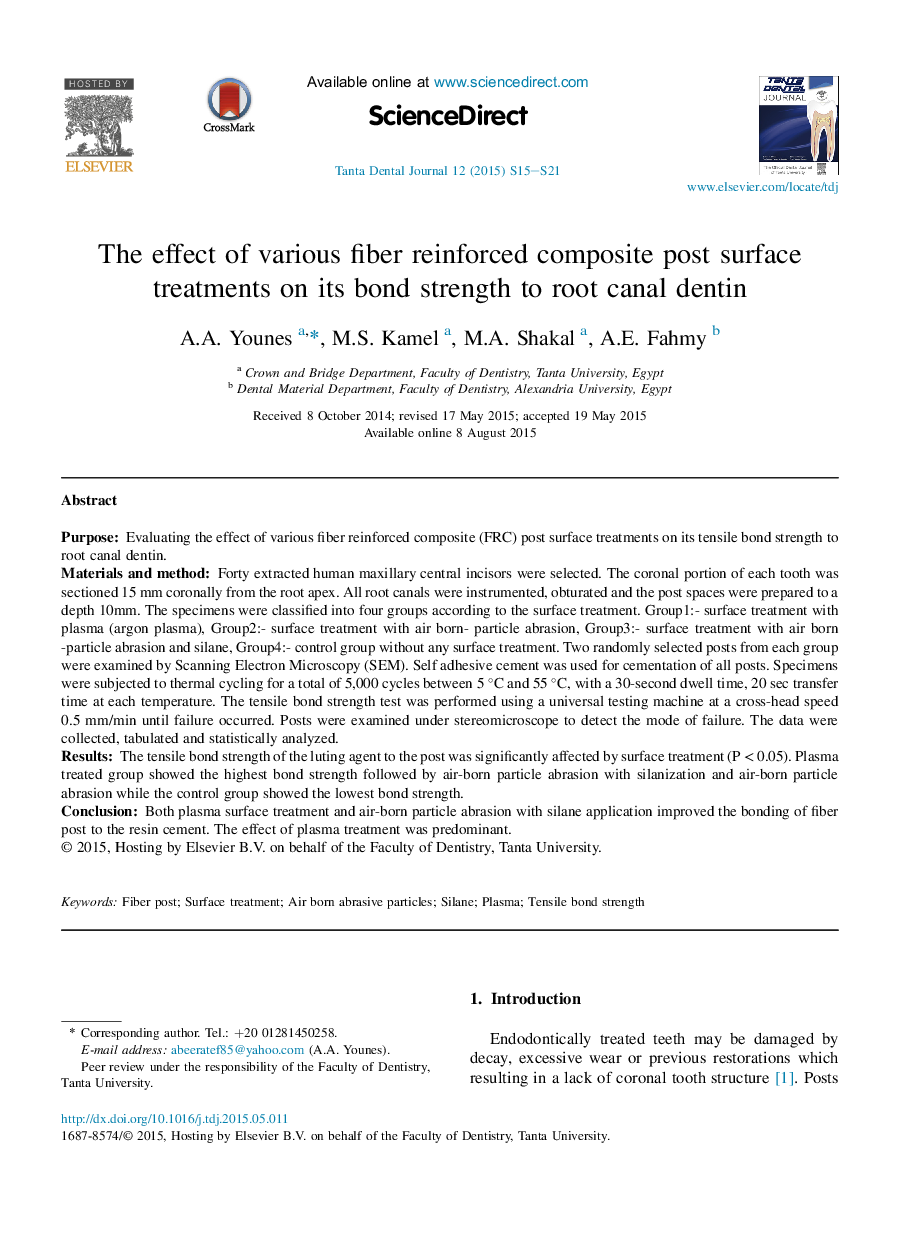| کد مقاله | کد نشریه | سال انتشار | مقاله انگلیسی | نسخه تمام متن |
|---|---|---|---|---|
| 3179622 | 1200466 | 2015 | 7 صفحه PDF | دانلود رایگان |
PurposeEvaluating the effect of various fiber reinforced composite (FRC) post surface treatments on its tensile bond strength to root canal dentin.Materials and methodForty extracted human maxillary central incisors were selected. The coronal portion of each tooth was sectioned 15 mm coronally from the root apex. All root canals were instrumented, obturated and the post spaces were prepared to a depth 10mm. The specimens were classified into four groups according to the surface treatment. Group1:- surface treatment with plasma (argon plasma), Group2:- surface treatment with air born- particle abrasion, Group3:- surface treatment with air born -particle abrasion and silane, Group4:- control group without any surface treatment. Two randomly selected posts from each group were examined by Scanning Electron Microscopy (SEM). Self adhesive cement was used for cementation of all posts. Specimens were subjected to thermal cycling for a total of 5,000 cycles between 5 °C and 55 °C, with a 30-second dwell time, 20 sec transfer time at each temperature. The tensile bond strength test was performed using a universal testing machine at a cross-head speed 0.5 mm/min until failure occurred. Posts were examined under stereomicroscope to detect the mode of failure. The data were collected, tabulated and statistically analyzed.ResultsThe tensile bond strength of the luting agent to the post was significantly affected by surface treatment (P < 0.05). Plasma treated group showed the highest bond strength followed by air-born particle abrasion with silanization and air-born particle abrasion while the control group showed the lowest bond strength.ConclusionBoth plasma surface treatment and air-born particle abrasion with silane application improved the bonding of fiber post to the resin cement. The effect of plasma treatment was predominant.
Journal: Tanta Dental Journal - Volume 12, Supplement 1, December 2015, Pages S15–S21
